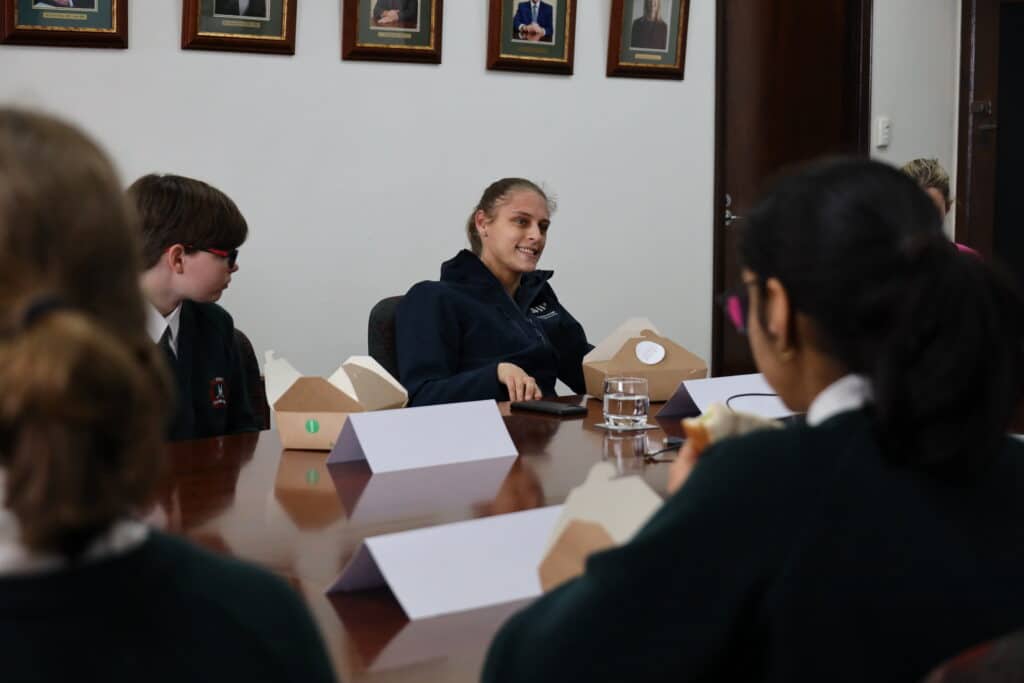Changing Girls’ Attitudes to Technology

Though girls use a large amount of technology daily, few choose to have careers in the field. With technological advances being everywhere we look, it’s a shame that more females don’t consider pursuing this activity as a profession.
Technology is an important element in the progress of humanity. Every day, computers assist us in communicating, entertaining, and operating. As our use of technology continues to climb, the demand for skilled computer engineers rises. Technology and innovation will drive the employment future. Australia’s technological workforce is expected to reach over 1.1 million in the next five years – almost four times faster than overall labour force growth.
The statistics for the Australian ICT sector mirror a global pattern in which women are underrepresented. In 2020, women made up just 29% of all ICT jobs in Australia. The number of women enrolling in ICT courses is also declining.
Why do we need women in technology?
We need more women in technology because diversity is essential for any field to thrive. Different perspectives and experiences lead to better solutions. Women offer a different perspective than men, which is necessary for creating innovative technologies that cater to all consumers. There are many advantages that come with having a gender-diverse workforce, including increased productivity, creativity and innovation.
Careers in technology are flexible, well paid and in demand, so why is there such gender disparity in attracting and retaining females to these career paths?
Why don't girls choose technology?

Some of the reasons girls are not choosing technology pathways are:
Self-efficacy – Girls often underestimate their own ability in STEM-related subjects and their belief in their ability to be successful. Our perceptions of our individual capabilities are often underrated, and this fear of failure makes some girls reluctant to engage with STEM. Fathers and brothers have been identified as a crucial factor in promoting girls’ confidence in making STEM choices at school and beyond.
Attitudes and Interests – Girls may perceive computing as stereotypically ‘nerdy’ and show a lack of technological curiosity rather than genuinely being open to understanding the importance and opportunities that the programming language, the concept of coding, and its relationship with problem-solving provides. A person’s understanding of STEM’s broad applications is vital in shaping their aspirations.
Career Perception – Girls often seek careers involving social interactions rather than those which require working with physical objects. The opportunities and varied pathways are not always understood. They are often dissuaded from pursuing careers in this field because they don’t see people like them represented. Stereotyping perceptions discourage girls’ and women’s interests in maths and science and are a major deterrent to their engagement in the field. We need more women in technology so that future generations of girls know this is a great career for females.
Peers – Girls’ interests and self-efficacy in technology are affected by their exposure to peers with the same interests. Having friends who are passionate about STEM encourages girls’ preferences in the field.
What can we do to promote girls' engagement with technology?
Teachers who are passionate and highly trained in STEM will help students develop more confidence and interest in science, math, and technology. Female Maths, Physics, and Technology teachers and leaders are absolutely essential. At Santa Maria College, we provide technological options for students through courses such as Creative Media, Robotics, Coding, as well as Applied Information Technology.
Community programs can also provide valuable opportunities, as do all-girl environments, to develop self-belief and interest through collaborative learning environments.
Career conversations and shaping career perceptions should begin in late Primary school because students begin choosing subjects early in high school; research indicates girls’ interests in maths and science diminishes as they transition from their middle primary years through to the end of secondary school.
Girls need to be aware that careers in technology will help address various social challenges, from reducing traffic congestion to delivering health services more efficiently. Understanding the importance of technology for problem-solving and making a difference for our people and our planet are important aspects that make these career pathways more appealing.
Teachers and parents need to be aware of their significance in shaping students’ attitudes and decisions for pursuing courses and future careers, particularly in fields where female role models are often lacking. Conversations about technology and related opportunities encourage girls’ interests and curiosity and simultaneously promote their sense of self-belief.
Opportunities to interact with role models in the field, particularly women, is also an important factor influencing girls’ choices in pursuing STEM education and reducing stereotypes of technology as a masculine domain. Interactions with alumni at Santa Maria College through our Sisterhood Lunch Series is providing this opportunity.

Megan Crawley (Class of 2008), a Software Developer, was our speaker this week at our Sisterhood Lunch Series. What a great role model she is for our girls. Here is some of what Megan had to say…
Girls must understand that the market is encouraging women to get technology jobs. The big companies are offering many training courses and female programming groups. They now understand that they need diversity in their workplaces because men and women think differently and collectively produce better outcomes.
When you enter the technology field, you need to be a problem solver due to its ever-changing state. You need to be good at googling and searching for answers. No answers are written in books, and you need to be resilient and ride the emotional rollercoaster of searching for answers to problems you don't know how to solve. When you finally find a solution, it is exhilarating.
Females who pursue careers in technology have great potential to use their creativity and problem solving to provide diverse opinions and solutions to many of our world’s problems. Society, schools and parents need to ensure girls are aware of the opportunities, understand the diversity of pathways available and make choices that will ignite interest and passion in this hugely important aspect of modern society.

The Power of Expectations in Shaping Student Success – Jennifer Oaten
Discover the transformative impact of expectations on student success. Learn how belief shapes outcomes in education and beyond.

Weekly Wrap Up: Term 2, Week 1, 2024
Term 2 has kicked off with a bang! We enjoyed the Year 11 Father-Daughter evening, celebrated Earth Day, and welcomed Dr. Mark Williams.

Inspiring Change: Earth Day 2024
Our Earth Day celebration this week was a powerful reminder of our collective responsibility to protect our planet for future generations.
- ConnectingLearing2Life, Featured, SocialInnovation, Technology Confidence
Author: Santa Maria College
Santa Maria College is a vibrant girls school with a growing local presence and reputation. Our Mission is to educate young Mercy women who act with courage and compassion to enrich our world. Santa Maria College is located in Attadale in Western Australia, 16 km from the Perth CBD. We offer a Catholic education for girls in Years 5 – 12 and have 1300 students, including 152 boarders.






